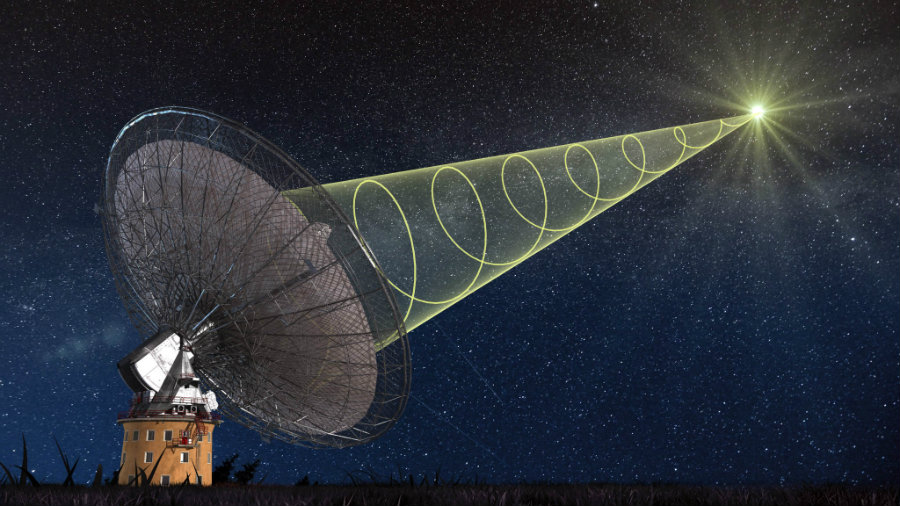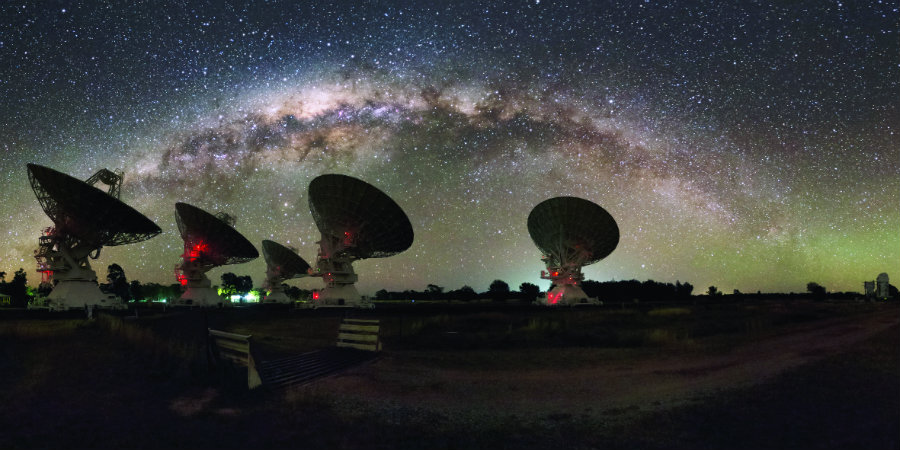Scientists detected 15 strange alien signals, known as fast radio bursts (FRBs), coming from a not-so-studied part of the space. On August 26, astronomers assured that these signals reached the advanced telescope equipment from a very far galaxy, considered to be located around 3 billion light-years away.
They considered this as a huge advance for science, due to these were the first FBRs that repeated continuously after they were first spotted. According to the Breakthrough Listen initiative, there will be another article to explain more about this new finding.

According to a study published by the Astronomer’s Telegram, $100 million has been invested in the Breakthrough Listen initiative, dedicated to finding signs of intelligent alien life. Scientists have worked for around 15 years in this project, but they have only been able to find around two dozens of FBRs. However, this not a bad amount of spotted signals due to the long distances they come from.
Backed by Mark Zuckerberg, Stephen Hawking, and the billionaire entrepreneur Yuri Milner, The Breakthrough Listen initiative was able to record these strange signals thanks to the Green Bank Telescope, in West Virginia, the Parkes Radio Telescope in Australia, and the Automated Planet Finder of the Lick Observatory, in Mt Hamilton, California.
“On Saturday, August 26 at 13:51:44 UTC we initiated observations of the well-known repeating fast radio burst FRB 121102 using the Breakthrough Listen Digital Backend with the C-band receiver at the Green Bank Telescope,” astrologists wrote in The Astronomer’s Telegram.
The fast radio bursts 121102 appeared again
Despite scientists found that these 15 FRBs repeated one by one, they have also observed others that re-appeared within a longer period of time.
In 2012, a FRB named 121102 was observed for the first time. However, astronomers heard it again three years later, in 2015. On August 26, the postdoctoral researcher from the Breakthrough Listen initiative, who discovered the increased activity, Dr. Vishal Gajjar, went to the Green Bank Telescope in West Virginia and used the Breakthrough Listen telescope through an entire 4 to 8 GHz frequency band – or C-band – which is used for satellite communications transmissions. After five hours of listening, Gajjar noted that the 121102 was appearing again. The team later analyzed the 400 terabytes of data collected and found that the 121102 repeated 15 times, one after another.
Researchers previously found that the 121102 was coming from a dwarf galaxy 3 million light-years away, but they couldn’t know much about it due to how fast it appeared and disappeared. According to Gajjar, this might be due to an immense explosion, so huge it’s reaching the Earth in 2017.

“The possible implications are two folds,” Gajjar told on Tuesday. “This detection at such a high frequency helps us scrutinize many (of FRB 121102’s) origin models. The frequency structure we see across our total band of 4 to 8 GHz also allows us to understand the intervening medium between us and the source… As the source is going into another active state means that the origin models associated with some sort of cataclysmic events are less likely to be the case of FRB 121102,” he said. “It should be noted that they can still be valid for other FRBs.”
It’s tough for astrologists to completely understand these FRBs
Fast radio bursts instantly disappear after being first spotted by radio telescopes, making them almost impossible for scientists to understand and study. The randomness of their appearance in a so-short period convert them in such a mystery, even scientists believed at the beginning that they were just glitches in one of the radio telescopes, instead of real signals coming from the space and being heard by the instruments.
The first fast bursts were precisely spotted – or “heard” – by radio telescopes in 2007, but scientists have been observing and identifying them since more than a decade ago. FRBs are recorded by radio telescopes surveying the sky at radio wavelengths and are considered to last less than five milliseconds.
FRBs findings don’t prove the existence of intelligent alien life since they might be just steam from a natural process in a really far-away galaxy. However, it’s extremely certain that these radio signals started they journey long before multi-cellular life even existed on Earth.
The Breakthrough Listen initiative captured the 15 fast radio bursts coming from a very faraway dwarf galaxy beyond the Milky Way, located in 3 billion light-years away. This is the first time FRBs come one by one, making researchers’ work a little bit less hard.
“As well as confirming that the source is in a newly active state, the high resolution of the data obtained by the Listen instrument will allow measurement of the properties of these mysterious bursts at a higher precision than ever possible before,” said Vishal Gajjar
Source: CNET

Yeah, your observations are confirmed & do match with reports from our $500 million worth of observatory, However dwarf galaxy seems to be located approx. 3.3 Billion years instead of 3.0 Billion years. Please calibrate your equipment accordingly.